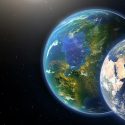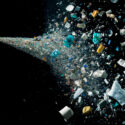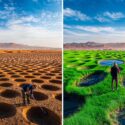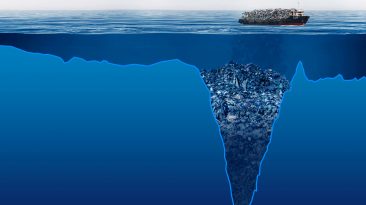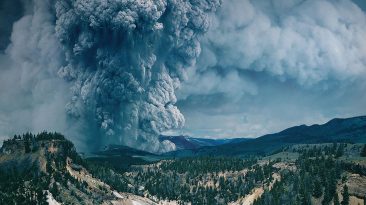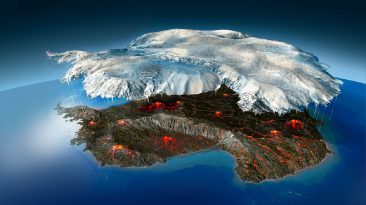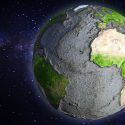Starbucks could save the Amazon rainforest. Okay, maybe not completely, but it could help the Amazon rainforest regrow. And all Starbucks would need to do is dump some of their waste into the Amazon. How would coffee waste help restore the Amazon rainforest?
How much of it would we need to dump? And why would Starbucks benefit from doing this?
Starbucks sells 4 million coffee drinks every day. That’s not just a lot of delicious caffeinated beverages. It’s also a lot of waste. And I’m not just talking about coffee grounds. There is a lot of other waste that comes from turning a coffee cherry into a coffee bean.
One of those waste products is coffee pulp. This is the discarded fibrous husk created when coffee cherries are processed. And, according to an ex-Starbucks entrepreneur, it piles up around coffee mills, polluting nearby waterways. But instead of being a problem, could this waste product become a solution?
If you haven’t heard yet, the Amazon forest is in bad shape. And it’s not getting any better. More than 11,000 sq km (4,281 sq mi) of the rainforest was destroyed from August 2019 to July 2020. And all this deforestation leads to the degradation of the forest and its soil.
Clearing and logging the land destroys habitats, and the forest begins to emit more carbon into the atmosphere than it absorbs. So instead of being a carbon sink, it becomes a carbon source. Cleared land is usually used for agriculture and industry, which can contaminate the soil and strip it of its nutrients.
And because of the increasing demand for food, fertile soil is disappearing at a rate of 24 billion tons per year. Poor soil conditions don’t just make it difficult to farm. It’s hard for ecosystems to rebound. So how could coffee pulp help?
Let’s travel to the Coto Brus county in southern Costa Rica to answer that question. This area was rapidly deforested in the 1950s to make way for coffee farms. But one of those farms is being turned back into a forest.
To help restore the forest, a group of researchers dumped 30 truckloads of coffee pulp onto the land. The area covered in coffee pulp bloomed into a forest in just two years. But the part not treated with coffee-pulp lagged far behind, still dominated by pasture grasses.
Why? Well, coffee pulp has nitrogen, phosphorus and potassium, which are important nutrients for plants. It also lowers the acidity of soil because of increased concentrations of calcium and magnesium. That could be very helpful for the highly acidic soil of the Amazon rainforest.
And, similar to the conditions in Costa Rica, using coffee pulp as mulch could help degraded land in the Amazon to regrow. You would need a lot of pulp. But Starbucks should have no problem providing it since it’s just piled up anyway.
They would take coffee pulp waste from their coffee farmers, compost it and send it to the Amazon rainforest. Spreading the coffee pulp compost over degraded patches could restore parts of the forest quicker than if it was just left alone.
The faster the Amazon rainforest regenerates, the quicker it could start storing more carbon from the atmosphere than it produces, becoming a carbon sink again. It’s a win-win-win. Coffee lovers can feel better about coffee waste products. Starbucks gets closer to achieving it’s goal of cutting it’s waste in half by 2030. And the Amazon would be on a path to restoration.
Waste takes a huge toll on our planet. And the waste we produce is more than just the stuff we throw into the garbage cans. There’s also the invisible waste from producing the goods we buy, like coffee. Repurposing waste is a great way to reduce our impact on the Earth. But is there anything else we could do with our trash?
Sources
- “Biotechnological potential of coffee pulp and coffee husk for bioprocesses”. Pandey, Ashok, Carlos R. Soccol, Poonam Nigam, Debora Brand, Radjiskumar Mohan, and Sevastianos Roussos. 2000. Biochemical Engineering Journal 6 (2): 153-162. doi:10.1016/s1369-703x(00)00084-x.
- “Deforestation and forest degradation”. 2017. IUCN.
- “In the Amazon, forest degradation is outpacing full deforestation”. Tommaso Jucker. 2020. The Conversation.
- “Soil degradation”. 2021. NSW Environment, Energy And Science.
- “Coffee Pulp Speeds up Forest Restoration, Study Finds”. ecowatch.com.
- “Forests on caffeine: coffee waste can boost forest recovery”. 2021. British Ecological Society.



